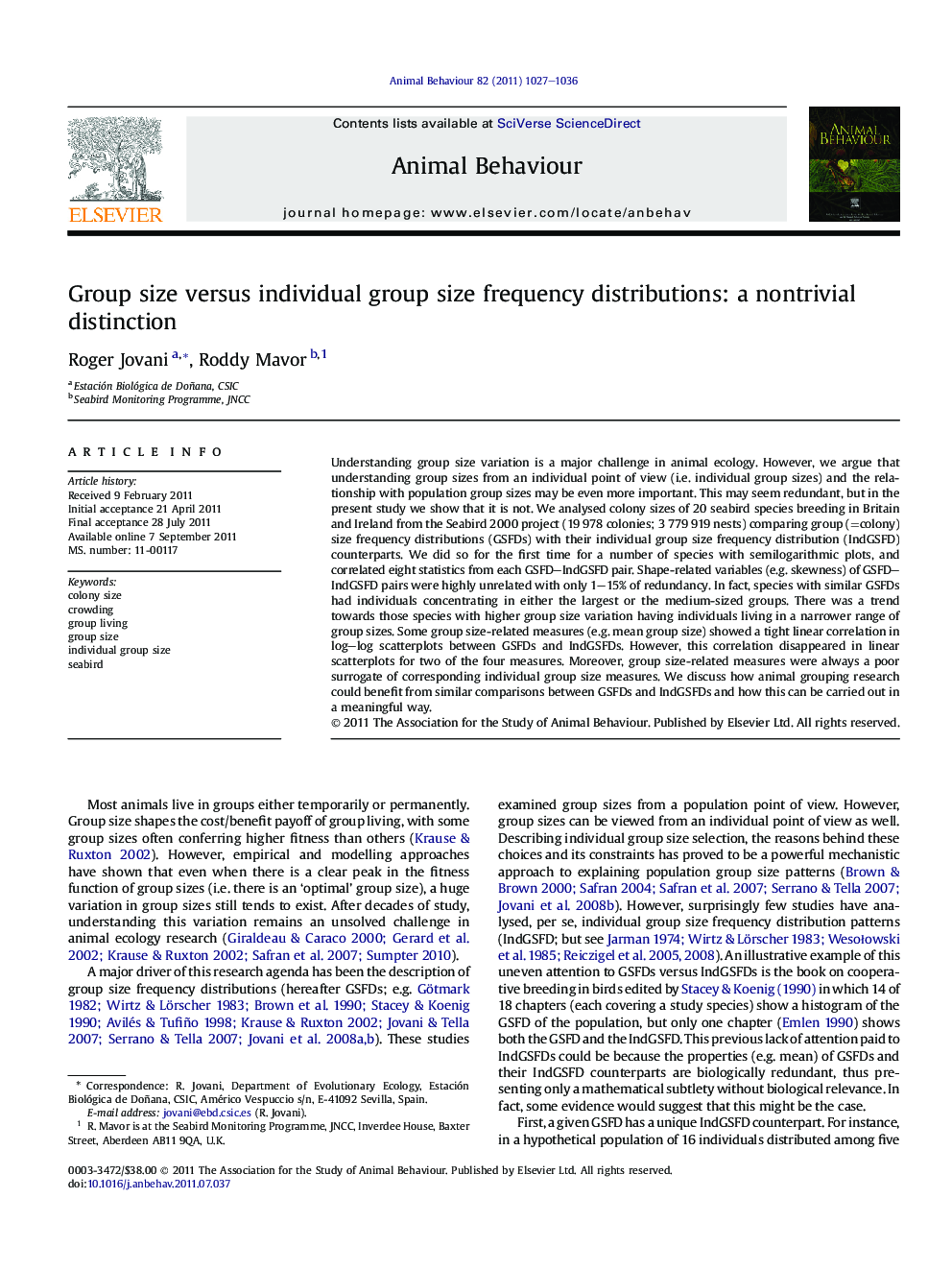| Article ID | Journal | Published Year | Pages | File Type |
|---|---|---|---|---|
| 2416922 | Animal Behaviour | 2011 | 10 Pages |
Understanding group size variation is a major challenge in animal ecology. However, we argue that understanding group sizes from an individual point of view (i.e. individual group sizes) and the relationship with population group sizes may be even more important. This may seem redundant, but in the present study we show that it is not. We analysed colony sizes of 20 seabird species breeding in Britain and Ireland from the Seabird 2000 project (19 978 colonies; 3 779 919 nests) comparing group (=colony) size frequency distributions (GSFDs) with their individual group size frequency distribution (IndGSFD) counterparts. We did so for the first time for a number of species with semilogarithmic plots, and correlated eight statistics from each GSFD–IndGSFD pair. Shape-related variables (e.g. skewness) of GSFD–IndGSFD pairs were highly unrelated with only 1–15% of redundancy. In fact, species with similar GSFDs had individuals concentrating in either the largest or the medium-sized groups. There was a trend towards those species with higher group size variation having individuals living in a narrower range of group sizes. Some group size-related measures (e.g. mean group size) showed a tight linear correlation in log–log scatterplots between GSFDs and IndGSFDs. However, this correlation disappeared in linear scatterplots for two of the four measures. Moreover, group size-related measures were always a poor surrogate of corresponding individual group size measures. We discuss how animal grouping research could benefit from similar comparisons between GSFDs and IndGSFDs and how this can be carried out in a meaningful way.
► Animal group characteristics are often analysed at the group level. ► We compare group size and individual group size frequency distributions. ► They show to convey non-redundant information on animal grouping. ► This individual point of view on grouping has theoretical and conservation interest.
